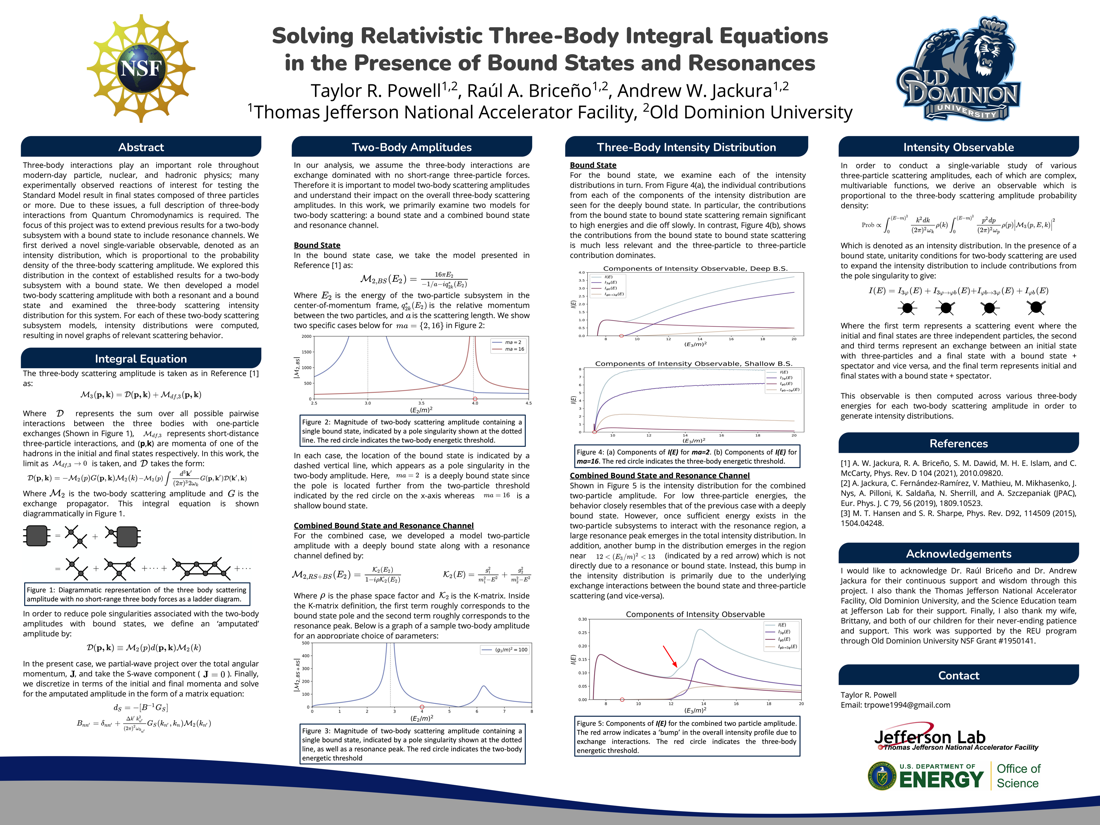Undergraduate Research at Jefferson Lab
Solving Relativistic Three-Body Integral Equation in the Presence of Bound States and Resonances
Student: Taylor Powell
School: Old Dominion University
Mentored By: Dr. Raul Briceño
Three-body interactions play an important role throughout modern-day particle, nuclear, and hadronic physics; many experimentally observed reactions of interest for testing the Standard Model result in final states composed of three particles or more. Due to these issues, a full description of three-body interactions from Quantum Chromodynamics is required. The focus of this project was to extend previous results for a two-body subsystem with a bound state to include resonance channels. We first derived a novel single-variable observable, denoted as an intensity distribution, which is proportional to the probability density of the three-body scattering amplitude. We explored this distribution in the context of established results for a two-body subsystem with a bound state. We then implemented a purely resonant two-body Breit-Wigner scattering amplitude and examined the consequences for the three-body intensity distribution. Finally, we developed a model two-body scattering amplitude with both a resonant and a bound state and examined the three-body scattering intensity distribution for this system. For each of these two-body scattering subsystem models, intensity distributions were computed, resulting in novel graphs of relevant scattering behavior. Additionally, in the combined resonant and bound state system, features in the overall intensity distribution show the possibility of directly observing the contribution from bound state and three-particle exchanges. Continued research is required to calculate the numerical convergence of solutions and rigorously define the intensity distribution in terms of probability conservation. Further exploration of various other numerical integration methods, interpolation techniques, and finer meshing extrapolations is also needed. These findings will allow for consistency checks with ongoing experiments reliant upon three-particle decays with a variety of underlying two-particle scattering amplitudes.
[Watch the presentation on YouTube]

Citation and linking information
For questions about this page, please contact Education Web Administrator.
